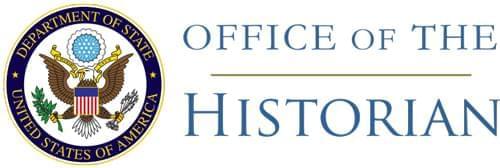800.6354/65: Telegram
The Secretary of State to the Ambassador in the United Kingdom (Kennedy)
277. Your 500, June 10, 7 p.m.2 In your discretion you are requested to bring the substance of the following to the attention of the British Government with the request that it place these views before the International Tin Committee. In presenting these comments, you may make such alterations in the text as seem to be desirable on the basis of your current knowledge of the situation.3
“The attention of the Government of the United States has been called to the fact that it is likely that at the next meeting of the International Tin Committee a buffer stock scheme will be approved by the Committee and presumably made effective on the basis of such further action as may be required by the producers and by the governments of the producing areas. Your Government is acquainted with the interest of this Government in the costs of production, stocks and price of tin. It therefore ventures to make the following observations:
First, it is recognized that current prices of tin are substantially below the average level of tin prices since the inception of restriction. Nevertheless, it is also conscious of the fact that world supplies of tin above ground are, viewed from any other angle, still very small. According to the London Financial Times of April 28, 1938, visible supplies of tin were 29,000 tons and invisible supplies, 10,000 tons. This combined figure is equivalent to only 20.9 percent of the world tin consumption for the 12 months ending March, 1938, or to 10 weeks’ consumption at that level. Furthermore, even this figure is higher than the average figure during the preceding months. It will be recognized that this country, the largest consumer of tin, has a natural concern in the maintenance of adequate stocks of a material so important for both defense and industrial purposes. If the purpose of the buffer stock is to make accessible larger total stocks of tin, it should [Page 941] be welcomed. But the emergence of the scheme at this time, coupled with a further lowering of production quotas, suggests that its inevitable effect, if not its essential purpose, is to immobilize a large part of available stocks rather than to increase them. Further, while some producers’ interests may regard the scheme as an alternative to quotas even lower than those in prospect, it is apparent that if it succeeds in its purpose of raising price to the minimum set of £200, the liquidation of private stocks and of the excess stocks held by the scheme implies that quotas will remain depressed for a considerable period of time.
The contemplated price range in itself seems ill-suited to the requirements of consumers over a long range period. The actual price range visualized according to the information of this Government is between £200 and £230 per ton. As already observed, even this minimum price is substantially above prevailing prices. Although what data this Government possesses leads it to believe that this range is unwarranted by the present level of costs, this data is not sufficiently complete and systematic to permit it to form at the present time a reliable judgment as to whether the price range may be considered to be a fair objective of production regulation, i. e., one that would satisfy the general criterion of price formulated at the World Monetary and Economic Conference in 1933, to wit:
‘It should be fair to all parties, both producers and consumers, it should be designed to secure and maintain a fair and remunerative price level, it should not aim at discriminating against a particular country, and it should as far as possible be worked with the willing co-operation of consuming interests in importing countries who are equally concerned with producers in the maintenance of regular supplies at fair and stable prices.’4
The Government hopes that it will be possible to undertake a full and comprehensive study of the costs of tin production with a view to securing from such study reliable indication of reasonable price objective. In the meanwhile, it wishes to bring before the members of the International Tin Regulation Committee and the interested governments its full reservations in regard to the price and its interest in enlarged stock supplies.”
For your own information: The foregoing is addressed primarily to the proposed price range. The question of the principle of an inflexible range raises broader questions than we are prepared to debate at this time.
Please send promptly the exact text of any communication which you may give to the British Government to Am[erican] Legation, The Hague, which is being instructed to present a similar communication to the Netherland Government.5
[Page 942]You may show this to Todd6 if he calls at the Embassy.
- Not printed.↩
- The note was presented to the British Government on June 17, 1938.↩
- Paragraph (d) of the report on the work relating to the coordination of production and marketing of the Economic Committee, London Monetary and Economic Conference; League of Nations, Monetary and Economic Conference, Report of the Bureau of the Conference, p. 19.↩
- Instruction to the Minister in the Netherlands not printed; the note was presented to the Netherlands Government on June 18, 1938.↩
- William B. Todd, European representative of the Steel Export Association of America, resident in London.↩
